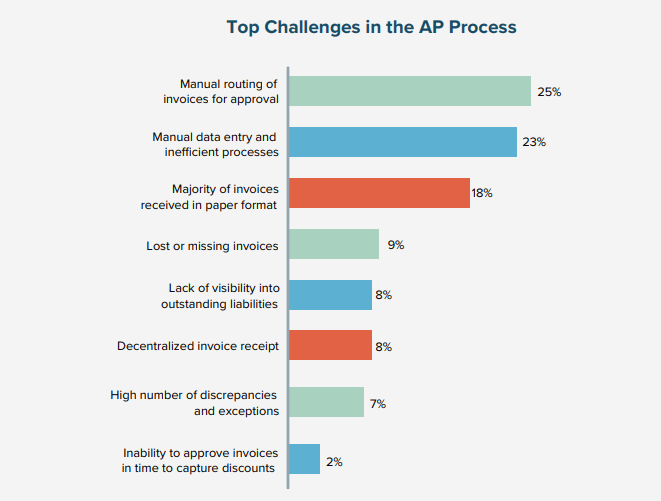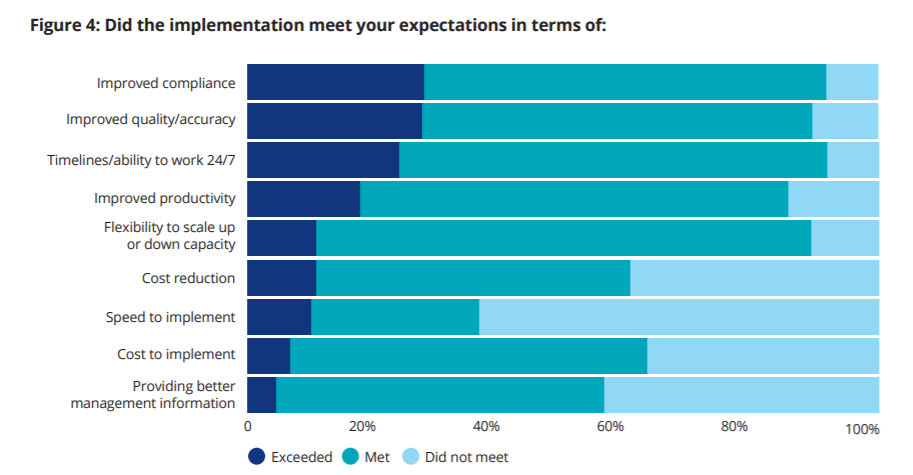As an experienced finance professional, you will understand that manual accounts payable processes are both costly and inefficient. The Covid-19 pandemic, and subsequent switch to remote working, has exacerbated the challenges that exist with manual accounts payable processes for many teams.
According to a recent survey by Gartner, remote working is here to stay in one form or another, with 74% of CFOs intending to shift some of their workforce to remote working permanently. This has led to a surge in the number of organizations implementing technologies to help them adapt to new ways of working. In fact, PYMNTS.com anticipate that spending on AP automation will increase from $1.9 billion in 2019 to over $3 billion by 2024.
However, before you implement an AP solution, there are things that you need to consider and ensure you have researched. In this blog we will take you through each one of these steps to ensure that you deliver the best AP solution for your organization:
1. Understand your own specific AP challenges
2. The available technologies
3. Cloud Vs On-Premise
4. Implementation barriers
5. The Team
6. Time to choose your partner
7. Phases of the implementation process
The Key Steps to Delivering the Best AP Solution
1. Have a clear understanding of your own specific AP challenges
According to a recent report by Levvel Research, manual routing of invoices for approval and manual data entry rank as the two biggest challenges within the AP process.

Prior to the pandemic, manual AP teams would have printed an invoice, delivered it to an approver’s desk and waited for approval. The approval process has become even more inefficient following the switch to remote working, with less face-to-face interaction resulting in invoices pending approval sitting in email inboxes for extended periods. Similarly, manual data entry has become a far more time-consuming process with an increased susceptibility to human error as AP staff operate from limited IT systems and often confined workspaces.
To ensure that you choose the right solution, take some time to think about what are the pain points specific to you and your organization. You will find that some, if not most, will be listed in the research above, but make sure to allocate the time now to speak with others in the finance function and across the entire business and identify every pain point. Once you have done this, rank your pain points and the degree to which they impact your AP process. This work now will help to ensure which you select the right option that suits your organization’s requirements.
2. Be aware of the benefits that different types of technologies bring.
Organizations that have already implemented an automated AP solution are now experiencing a number of improvements in their AP process. These benefits include reduced costs, full control and visibility over the entire process and reduced human error, to name just a few. We discussed these in detail in a recent blog.
Many of these benefits are enabled by some transformative technologies that, depending on the benefits that matter to you most, could play a big role when it comes to choosing an AP solution.
One such technology is Optical Character Recognition (OCR). Found within many AP solutions, OCR has the ability to scan and extract relevant data from invoices, ready for processing.
Some organizations, however, make the mistake of thinking OCR alone can handle all of their manual AP challenges or believe that data entry is the only issue that they have. We recently discussed both the benefits and limitations of OCR.
OCR technology fully automates the invoice data entry process so that invoices are ready to be matched against POs and GRNs. It is a particularly transformative feature for organizations that have to deal with a large amount of paper-based invoices and if you are looking to reduce your invoice processing times and reduce human error, OCR will have a big part to play. However, that is where its capabilities end.
We have already seen that manual approval is the number one challenge for AP teams and only by automating this process will significant reductions in costs and processing times be achieved. While OCR has an important part to play in automating AP processes, it will likely be one of a number of technologies included in the AP solution of your choice.
Robotic Process Automation (RPA) is another technology that is becoming more common within AP solutions. Deloitte recently reported that 53% of surveyed organizations have either implemented or have begun incorporating robotic process automation into their invoice processing strategy.
RPA automates several rules-based tasks and processes, most notably invoice matching and routing of invoices for approval. Deloitte’s Global Robotics Survey presents the benefits of incorporating RPA into the implementation of an AP solution, with compliance, quality/accuracy and processing times proving to be the areas with the biggest improvements.

Within manual AP teams, the PO creator can end up delaying the process by forgetting to confirm receipt of goods or services. However, RPA technology ensures a fully compliant process is established by sending alerts to the creator when the GRN is absent from the matching process.
RPA also delivers a far more efficient invoice approval process by automating routing invoices to assigned approvers and prompting them with reminders to ensure minimal delay to the process.
Again, however, it must be stressed that while RPA is capable of transforming certain AP processes it only forms part of the capabilities of a comprehensive AP solution.
For more information on how RPA can transform invoice processing, download our whitepaper.
3. Do you require cloud or on-premise hosting?
Some AP solution providers will offer cloud-based technology that allows the solution to be implemented remotely and enables staff to access the system regardless of their location. It also offers the flexibility of scaling up or down depending on overall usage and company growth.
Others may only offer on-premise solutions, where the software is installed on the company’s own servers. In the past, organizations may have chosen the option of on-premise for added peace of mind over security or if they were in a highly regulated industry. However, the costs of managing and maintaining on-premise solutions are far higher compared with the cloud and also requires IT staff to be on hand to resolve any potential issues that arise. As for the question of security, cloud solutions are as secure as on-premise solutions, but without the costs of maintaining facilities and hardware. Instead of having to manage physical servers or storage devices, you use software-based security tools to monitor and protect your flow of data.
With many AP teams now operating fully or at least partially remotely, cloud-based solutions will likely be the preferred option for most.
4. What are the barriers to implementing an AP solution?
For any organization looking to implement an AP solution, there will be certain roadblocks along the way that must be overcome. We discussed these in detail in a recent blog.
A common barrier encountered is a lack of budget or sometimes, simply, general support from management towards the project. This potential blocker ties in with the need to collaborate with management at the earliest opportunity and present a comprehensive business case to them.
A lack of knowledge regarding the goals and the expected outcome of the project could result in certain key stakeholders adopting a resistant attitude. This attitude may be born out of fear for their jobs, in the case of AP staff or your CFO may be unaware of the cost benefits involved. With cost reduction a major priority for CFOs at the moment, it is vital that they are brought on board at any early stage and are aware of the benefits.
With buy-in essential from everyone affected, regular communication of progress will be key to ensuring a successful implementation.
5. Establish a comprehensive project team to deliver the solution
With a clear understanding of your organization’s AP solution requirements and with any potential roadblocks having been overcome, you should look establish an effective team of people to manage the project. You will need a balanced team in place, with various levels of seniority from all essential departments. Key members will include your finance director, both a senior and junior member of your AP department along with a representative from IT.
6. Choose your Solution Provider
With the necessary foundations in place, you will be ready to go about selecting the provider of your AP solution. Depending on the complexity of the solution you require, this could be a relatively long process, including several demos and documentation reviews. Be sure of your exact requirements and find out if the provider can truly deliver on what your expectations of AP automation are.
Pricing will also be a key topic of discussion. You will have conducted a cost-benefit analysis so you know that automating will deliver real cost savings. At this stage, you need to take into account your budget and be sure of the implementation costs involved, the costs of ongoing services and also any liabilities in the event of the implementation failing.
7. Define the phases of the implementation process
Your solution provider may have their own onboarding and implementation processes defined and take the lead with this step. It is important to lay out the exact steps of how your organization will reach ‘go-live’ with your new automated AP solution.
Training workshops, aligned to specific user roles, should take place for everyone that will be using the solution. Following training, all features within the solution need to be rigorously tested by relevant departments. Progress should be tracked with regular updates communicated to all key stakeholders, to ensure that stakeholders remain engaged with the project.
Conclusion
Once these phases have been completed, and everyone is satisfied with the state of the project, you will be ready to officially activate your AP solution for the rest of your organization and supply chain. Monitoring of the solution’s performance and stakeholder competence towards the solution and adherence to new procedures will be key following the initial activation phase. By following these steps, you may be surprised at how quickly the transformative results of implementing an automated AP solution become apparent.


